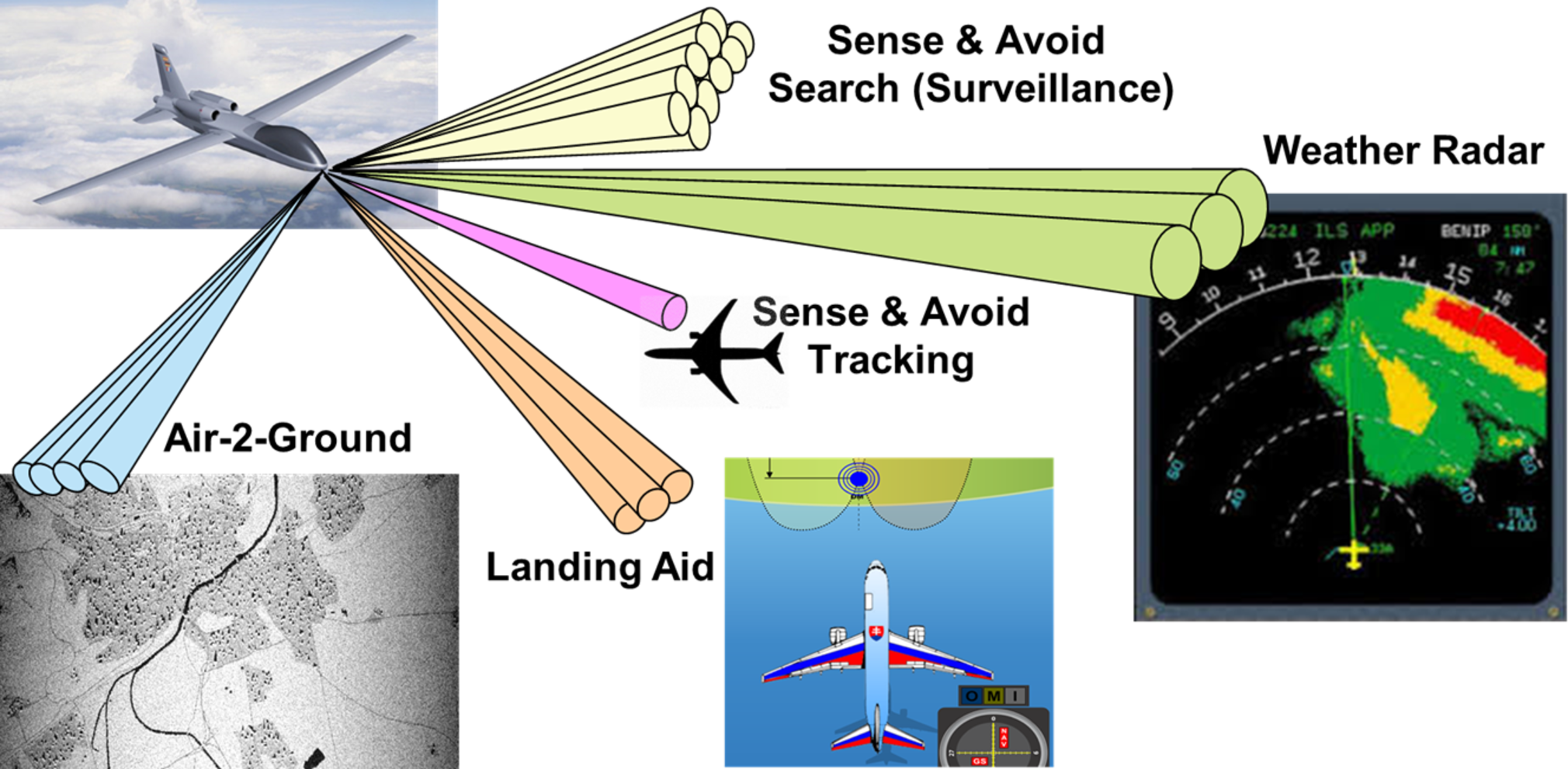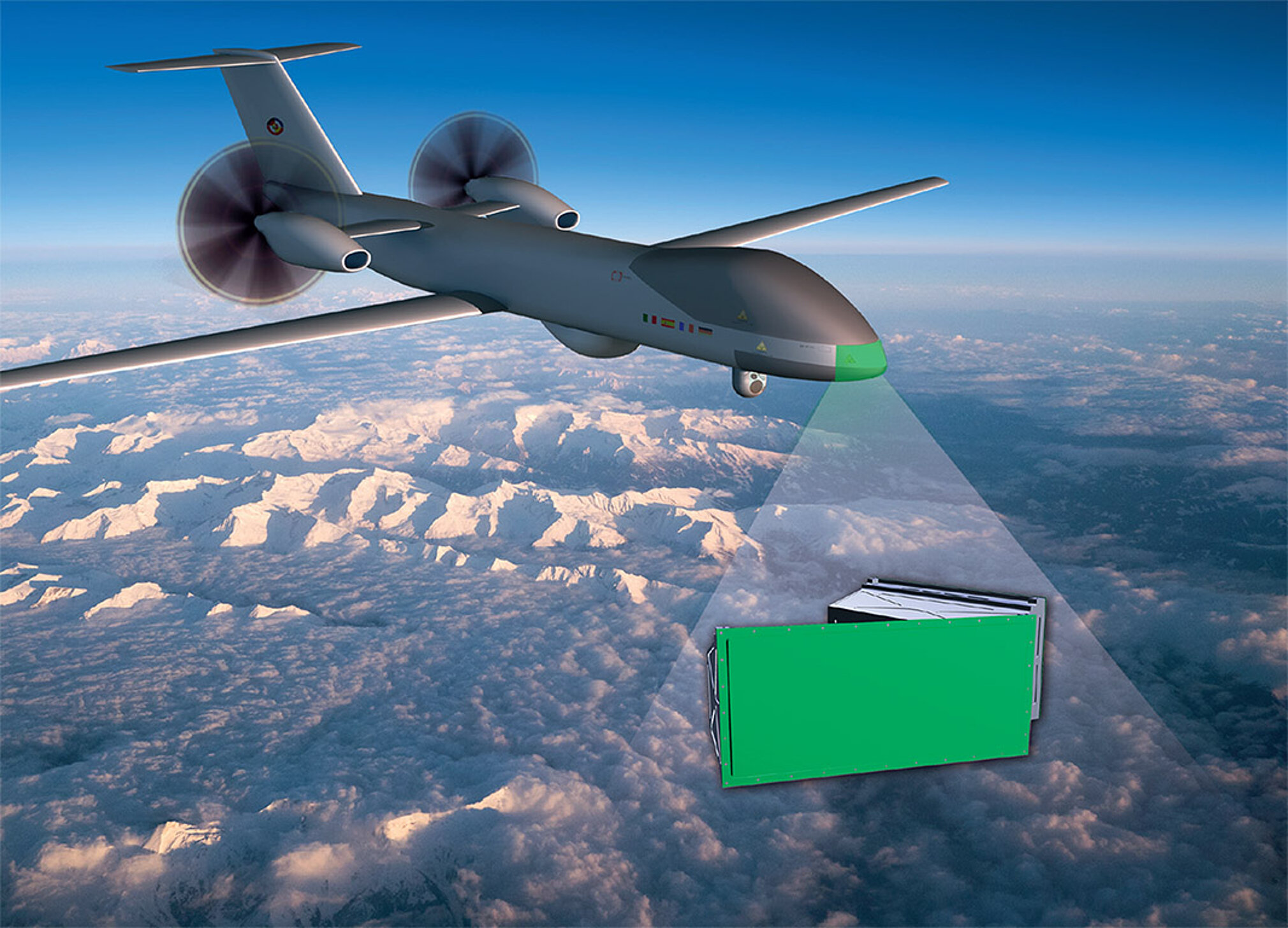Detect & avoid: Flying safely without pilot
Pioneering trials and new applications
One of the most mission-critical requirements for the full integration of unmanned aircraft into the airspace to support both military and civil applications is the ability to avoid collisions with other aircraft in any given airspace.
April 20, 2022
info@hensoldt.net
CATEGORIES:
Radar,
Detect and Avoid,
Unmanned Flying
A range of technologies is being explored to allow an unmanned aircraft to detect other air traffic, and to take avoiding action when necessary. An area that HENSOLDT is making significant strides in is the provision of a detect-and-avoid (DAA) system with radar at its core.
In 2021, HENSOLDT achieved a significant first in collaboration with the German Aerospace Center (DLR), when it conducted a 22-hour flight test campaign with a DAA radar installed in DLR's Dornier DO 228 aircraft.
DLR's DO 228 aircraft D-CODE is a specially developed aircraft and is used as German national demonstrator für MALE UAV test programmes. It is equipped with an experimental advanced flight management and flight control system and can be flown from a ground station or from autonomous systems on-board while operations are monitored by a safety pilot.
The HENSOLDT DAA system was integrated into to the aircraft by the DLR department for Flight Experiments. Also, the planning of the flight trials for the safe interaction with an intruder aircraft to be detected as well as the execution was conducted by DLR. The DLR Institut of Flight Guidance prepared the flight tests by proposing the ConOps as well as to carry out pre-flight simulations in its cockpit simulator as part of its Air Traffic Validation Center.

With the DAA system connected to the aircraft’s flight management system, and with a safety pilot aboard to take command only in an emergency, the aircraft autonomously detected a Falcon 20E and Robin DR400-200R ‘intruder’ and successfully initiated avoidance manoeuvres across a range of different convergence scenarios. During the trials the radar established a track on the intruder at a range of around 20km.
For a large medium-altitude, long-endurance (MALE) UAV application, the DAA radar comprises two electronically-scanned arrays that provide coverage over a 240° arc ahead of the aircraft.
As well as DAA capabilities, the radar also offers additional capabilities such as weather detection. This is critical to UAV operations as it bestows on the oft-fragile aircraft the ability to autonomously navigate around turbulent air encountered in the proximity of storms.
The radar can also be used as an air-to-ground sensor to improve navigational accuracy through the detection of ground drift, and also as a landing aid.
Full scope integration
While it is a critical component in the HENSOLDT DAA system, the radar works in conjunction with other systems and sensors in an integrated detect-and-avoid system.
This can include optical sensors, transponders and collision avoidance systems such as IFF, ADS-B and TCAS, as well as inputs from command and control datalinks. Data from all sources is fused in the DAA computer to provide competent information upon which avoidance commands can be generated, if required.
HENSOLDT is participating in several national and European projects to develop DAA capabilities. The company is supplying the radar for the EUDAAS programme—the successor to MIDCAS—that aims to develop a DAA system for large UAVs, with flight testing due to begin in 2023.
Through a number of initiatives such as ACAS X, the company is also a key partner in efforts to establish standards for the technology, including in how EUROCAE’s European standards can be harmonised with other international standardisation efforts, notably those of the Federal Aviation Administration in the US.

Safety for the air taxi revolution
Buoyed by its results so far, HENSOLDT is looking way beyond the current military applications such as MALE UAVs. The DAA radar is a highly scalable concept, with obvious applications to smaller air vehicles, including helicopters and—most importantly—unpiloted air taxis.
The latter is one of the most exciting developments in aviation, with many companies investing in the next step forward in urban mobility. To answer growing demands for the robust DAA technology that is a must for this new form of transport, HENSOLDT is developing systems with distributed arrays to provide 360° coverage around the platform. At the heart of the system is the MIMO (multiple input, multiple output)-Air radar.
Although smaller than the larger DAA system, it provides the same range of functions—DAA, near-range weather, landing aid, ground drift detection—but also provides obstacle detection in degraded visual environments, and the ability to avoid small drones. It could also provide hostile fire indication in defence/security applications.

Now in full development, the MIMO-Air would typically be mounted in the nose to provide coverage across an arc of around 240°. An even smaller radar array currently in the conceptual phase, the Ultra Smart Short-Range Sensor MIMO radar, or Ultra S3 MIMO, could be mounted on the side of the air vehicle to complete the coverage around the vehicle. HENSOLDT is leading the German national LuFo 6 programme that is examining the application of MIMO technology for air taxis and helicopters operating in urban environments, as well as integration into the wider airspace.
The aim is to develop and demonstrate an air traffic monitoring and management system that incorporates platform DAA capabilities with cognitive radar systems for tracking, datalinks, and control functions. Flight test and analysis in further collaboration with DLR is scheduled to begin in 2023, initially using a representative system mounted in a safety-manned helicopter.
HENSOLDT Detect & Avoid Radar
The Detect & Avoid Radar for remotely piloted aircraft systems (RPAS) facilitates a safe integration of unmanned systems into the non-segregated airspace. It replaces the pilot’s perception by a technical system which outclasses the human eye regarding range, probability of detection and accuracy in order to avoid collision of aircraft (cooperative and non-cooperative).
